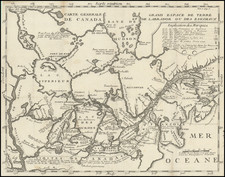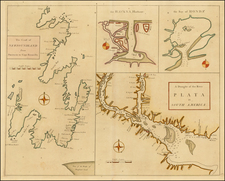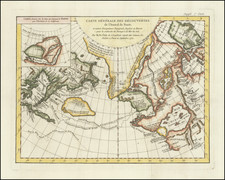Excellent map of Canada, Alaska and the NW Part of America, immediatley pre-dating the first Lewis & Clark exploration details.The Missouri River appears as far north ans the Mandans and Snake Nation. Nice details along the Saskashawin [sic] River, as far as the Rocky Mtns and th Cattanahowes and Black Foot Indian Lands, with notes regarding Coal in the Southern Branch and its tributaries. The Rocky Mountains extend in a single narrow Cordillera as far north as 65 degrees, with MacKenzie's discoveries noted just to the North. A number of Hudson Bay Trading Houses appear. Along the NW Coast, there is a single primitive Cordillera extending from just North of San Francisco to the mouth of the Columbia, where the Mountains become a bit more complex, extending north to Valdez Island and Mt. St. Elias. North of Vancouver, there are 3 Indian Villages named and a route across the Rockies. An apocryphal Columbia River is shown in the general area of the Fraser, but generally the area between the Rocky Mtns and the Coast Range is blank. One of the best large format pre-Lewis & Clark maps of the region. Some minor soiling, mostly in the margins, and a bit of discoloration at the centerfold, else a nice example.
John Pinkerton (1758-1826) was Scottish literary critic, historian, poet, and geographer. From age twelve he educated himself at home in Edinburgh, as his father had declined to send him to university. His father instead apprenticed John to a lawyer, William Aytoun, but the boy did not like the legal profession. In his spare time, the young man wrote poetry and collected Scottish ballads, which he tried to have published. After the death of his father, Pinkerton moved to London in 1781, to be closer to the vibrant literary scene.
Pinkerton’s earliest publications were collections of ballads. However, a fellow critic uncovered that Pinkerton had forged several of the “ancient” poems and published accusations against Pinkerton in the Gentleman’s Magazine. Throughout the 1780s, Pinkerton published poetry, works on numismatics, and historical works. He corresponded with Sir Walter Scott, Horace Walpole, and Edward Gibbon, but most of his friendships ended in acrimony. Pinkerton was a hypochondriac, unorthodox about morality and religion, and a prickly personality who lived with several women during his lifetime, marrying illegally at least once.
After 1800, Pinkerton turned to geographical works. In 1802 he published Modern Geography, a text that was quite popular and translated into French and Italian. In 1808-15, he produced a New Modern Atlas, which was well received, followed by A General Collection of Voyages and Travels (1808-14). Soon after these projects, Pinkerton moved to Paris, where he lived until he died in 1826.

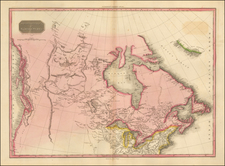








![Carta rappresentante una parte della Baja Hudson, e le Regioni a Maestro dell'America Settentrle. [Map representing a part of Hudson Bay, and the regions to the northwest of North America.]](https://storage.googleapis.com/raremaps/img/small/95989.jpg)
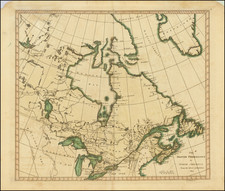
![[Russian Alaska] Меркаторская Генеральная Карта, части Российскихъ Владеній въ Америкѣ (Mercator's [or Mercatorial] General Map, parts of Russian Possessions in America)](https://storage.googleapis.com/raremaps/img/small/55959.jpg)
